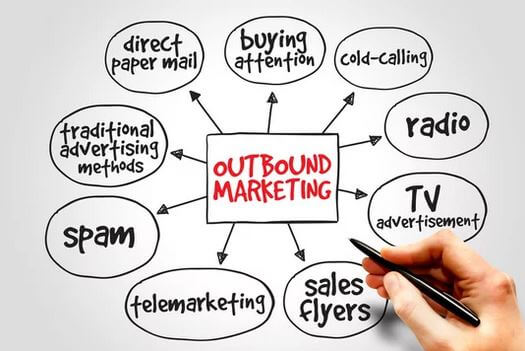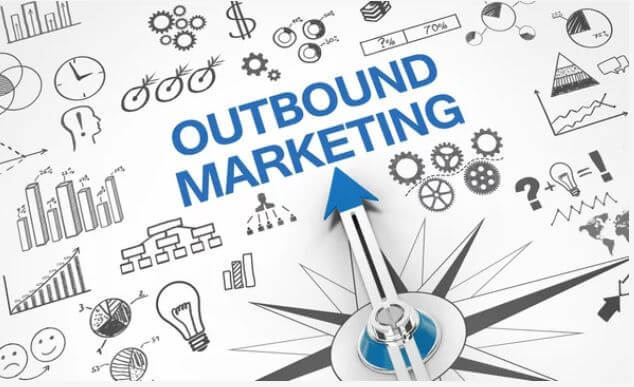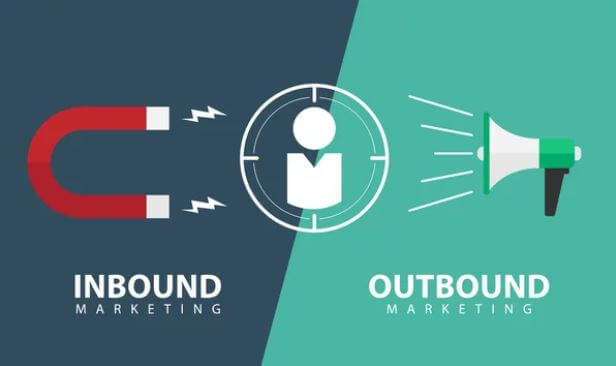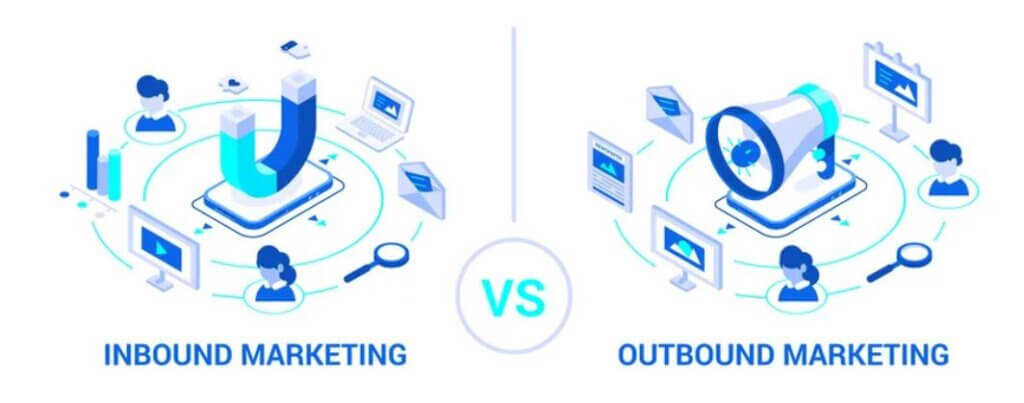Introduction to Outbound Marketing
Outbound marketing, also known as traditional or interruption marketing, is a form of advertising that involves reaching out to customers through various channels such as direct mail, telemarketing, email, outdoor advertising, and trade shows. Outbound marketing aims to bring a company’s products or services to the attention of potential customers in the hopes of securing their business.
Definition of Outbound Marketing
Outbound marketing refers to any marketing effort focused on reaching customers instead of waiting for them to come to you. This type of marketing is characterized by tactics such as mass-media advertising, direct mail, telemarketing, and other forms of outreach that actively seek out potential customers.
Objectives of Outbound Marketing
The main objective of outbound marketing is to bring a company’s products or services to the attention of potential customers. This is typically achieved through the use of various marketing channels that are designed to reach a large audience. The goals of outbound marketing can vary depending on the type of business and its target market, but some common objectives include the following:
- Generating leads: Outbound marketing can help companies identify and engage with potential customers, which can help create tips for future sales.
- Building brand awareness: Outbound marketing can build brand awareness and familiarity among target audiences, which can help drive future sales.
- Boosting sales: Outbound marketing can be used to generate immediate sales, as well as to build long-term customer relationships.
- Reaching a larger audience: Outbound marketing can help companies get a larger audience, including those who might not have otherwise discovered their products or services.
Outbound marketing is a powerful tool for companies looking to reach new customers and build their brands. Whether used as a standalone strategy or as part of a comprehensive marketing plan, outbound marketing can help companies achieve their sales and marketing goals.
Popular Outbound Marketing Strategies
Outbound marketing encompasses various advertising methods designed to reach potential customers. Some of the most popular outbound marketing strategies include:
Direct Mail Marketing
Direct mail marketing involves sending physical mail, such as brochures or postcards, directly to a customer’s home or office. Direct mail campaigns can be targeted to specific demographic groups and personalized to the recipient. Direct mail is a relatively low-cost way to reach a large audience and can generate leads, build brand awareness, and drive sales.
Telemarketing
Telemarketing involves making outbound calls to potential customers to promote products or services. Telemarketing can effectively generate leads and direct sales but can also be time-consuming. It may result in a high rate of rejection from potential customers.
Email Marketing
Email marketing is a form of direct digital marketing that involves sending promotional emails to a list of subscribers. Email marketing can generate leads, build brand awareness, and drive sales, and it is a relatively low-cost way to reach a large audience.
Outdoor Advertising
Outdoor advertising involves placing ads on billboards, transit shelters, and other outdoor media. Outdoor advertising can effectively reach a large audience and build brand awareness, but it can also be expensive and may not target specific demographics.
Trade Shows and Exhibitions
Trade shows and exhibitions allow companies to showcase their products and services to a large audience. Companies can use trade shows and exhibitions to generate leads, build brand awareness, and make direct sales. However, exhibiting at trade shows can be expensive, and it may not be possible to reach a large audience if the trade show is not well-attended.
Overall, the best outbound marketing strategy will depend on a company’s goals, target audience, and budget. By carefully considering the advantages and disadvantages of each method, companies can choose the strategies most likely to help them achieve their sales and marketing objectives.
Advantages and Disadvantages of Outbound Marketing
Outbound marketing, also known as traditional or interruption marketing, has advantages and disadvantages. Some of the critical benefits of outbound marketing include the following:
Advantages of Outbound Marketing
Immediate Results
One of the main advantages of outbound marketing is that it can produce immediate results. For example, a telemarketing campaign can result in direct sales, while a direct mail campaign can generate leads that can be followed up on for future sales. Outbound marketing can be a quick and effective way to reach a large audience and drive sales.
Reaches a Large Audience
Outbound marketing can reach a large audience, benefiting companies looking to build brand awareness or generate leads. For example, a well-placed billboard can get thousands of potential customers daily, while a well-targeted direct mail campaign can get a specific demographic group.
Can be Personalized
Outbound marketing can be personalized to the recipient, which can help increase its effectiveness. For example, a direct mail campaign can target specific demographic groups. It is personalized to the recipient, while telemarketing campaigns can be customized to the individual being called.
Cost-effective
Outbound marketing can be relatively cost-effective compared to other forms of advertising, especially for small and medium-sized businesses. For example, direct mail and email marketing can be low-cost, while telemarketing and outdoor advertising can be more expensive but still cost-effective for certain companies.
Disadvantages of Outbound Marketing
Interruptive
One of the main disadvantages of outbound marketing is that it can be interruptive. For example, potential customers can see telemarketing calls and unsolicited emails as annoying, while outdoor advertising can be seen as intrusive.
High Rejection Rate
Outbound marketing efforts can result in a high rejection rate. For example, telemarketing campaigns may increase “no” responses, while direct mail campaigns may result in a low response rate.
May not Target Specific Demographic Groups
Outbound marketing may not be able to target specific demographic groups effectively. For example, outdoor advertising may reach a large audience, but targeting particular demographic groups, such as age or income, may not be possible.
Can be Expensive
Outbound marketing can be expensive, especially for larger companies or businesses that use multiple outbound marketing channels. For example, telemarketing and outdoor advertising can be more costly than direct mail or email marketing, and trade shows and exhibitions can be expensive to participate in.
Overall, the best outbound marketing strategy will depend on a company’s goals, target audience, and budget. By carefully considering the advantages and disadvantages of each method, companies can choose the strategies most likely to help them achieve their sales and marketing objectives.
How to Measure the Success of Outbound Marketing Efforts
Measuring the success of outbound marketing efforts is essential for determining the return on investment (ROI) and making informed decisions about future marketing strategies. Some of the critical metrics for measuring the success of outbound marketing efforts include:
Response Rate
Response rate is one of the most critical metrics for measuring the success of outbound marketing efforts. This metric measures the percentage of recipients who respond to a particular marketing campaign, such as through a phone call, email, or direct mail. A high response rate indicates that the marketing campaign successfully engaged its target audience.
Conversion Rate
The conversion rate measures the percentage of recipients who take a desired action, such as making a purchase or filling out a form. A high conversion rate indicates that the marketing campaign effectively converts leads into customers.
Return on Investment (ROI)
ROI measures the return generated by an investment, such as a marketing campaign, compared to the cost of that investment. A high ROI indicates that the marketing campaign successfully generated sales and profits for the company.
Lifetime Value (LTV)
Lifetime value measures the total value that a customer brings to a company throughout their relationship with that company. A high LTV indicates that the marketing campaign successfully attracts and retains high-value customers.
Customer Feedback
Customer feedback is an essential metric for measuring the success of outbound marketing efforts. This can be obtained through surveys, focus groups, or direct customer feedback, such as through comments and reviews. Positive customer feedback indicates that the marketing campaign was well-received by its target audience.
By tracking these metrics, companies can better understand the impact of their outbound marketing efforts and make informed decisions about future marketing strategies. Following these metrics over time is essential to identify trends and improve marketing campaigns. Additionally, companies should set specific goals and objectives for each marketing campaign and measure their success against these goals.
In conclusion, measuring the success of outbound marketing efforts is an essential aspect of any marketing strategy. By tracking key metrics such as response rate, conversion rate, ROI, LTV, and customer feedback, companies can better understand the impact of their marketing efforts and make informed decisions about future marketing strategies.
Conclusion
Outbound marketing is a traditional form of marketing that involves actively reaching out to potential customers through various channels such as television, radio, direct mail, telemarketing, and email marketing. Although outbound marketing has been around for a long time, it is a popular marketing strategy for many businesses.
Outbound marketing has several advantages, including reaching a broad audience to target specific demographics and generating immediate results. However, it also has its disadvantages, such as the potential for high costs, the potential for negative customer experiences, and the potential for low response rates.
To be successful with outbound marketing, it’s essential to have a well-defined target audience, choose the proper channels for reaching that audience, and measure the success of marketing efforts using metrics such as response rate, conversion rate, ROI, LTV, and customer feedback.
In conclusion, outbound marketing continues to be a valuable marketing strategy for many businesses. By carefully considering the advantages and disadvantages of outbound marketing, choosing the proper channels for reaching the target audience, and measuring the success of marketing efforts, businesses can achieve the desired results from their marketing campaigns.
F.A.Q
What is the difference between inbound and outbound marketing?
Outbound marketing and inbound marketing are opposite approaches to attracting and engaging customers.
Outbound marketing involves actively reaching out to potential customers through television ads, telemarketing, direct mail, and email marketing. Outbound marketing aims to disrupt the customer’s daily routine and get their attention.
Inbound marketing, on the other hand, focuses on attracting customers through content and experiences that are relevant and helpful. This approach utilizes search engine optimization, social media marketing, content marketing, and website optimization to attract customers. Inbound marketing aims to provide valuable information to potential customers so that they are more likely to engage with a company and eventually become customers.
In summary, outbound marketing is an active and disruptive approach that reaches out to potential customers. In contrast, inbound marketing is a more passive and helpful approach that attracts customers to the company.
What are examples of outbound marketing?
Outbound marketing involves actively reaching out to potential customers through various channels to promote a product or service. Here are some examples of outbound marketing:-
- Television ads: Advertising on television is a traditional form of outbound marketing that allows companies to reach a large audience.
- Direct mail: Sending physical advertisements such as brochures, postcards, and flyers directly to potential customers is known as direct mail marketing.
- Telemarketing: Telemarketing involves making sales calls to potential customers over the phone.
- Radio ads: Radio advertisements are a form of outbound marketing that allows companies to reach a target audience through radio.
- Email marketing: Sending promotional emails to an extensive list of potential customers is a form of outbound marketing that can drive sales and generate leads.
- Trade shows and events: Attending and exhibiting at trade shows and events is a way for companies to promote their products and services to a target audience in person.
- Billboards: Billboards are giant, physical advertisements placed strategically to reach a target audience.
These are just a few examples of outbound marketing tactics. The tactics a company uses will depend on its target audience, budget, and marketing goals.







